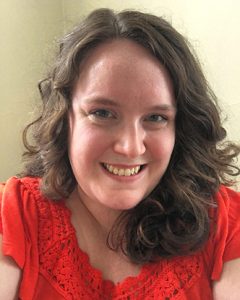Colleen Wynn publishes research on residential segregation

 Colleen Wynn, who joined the University of Indianapolis Department of Sociology as assistant professor in fall 2018, published research in a special issue of the journal Social Sciences on Social Inequality and Residential Segregation in Urban Neighborhoods and Communities. Samantha Friedman, University of Albany-SUNY, was co-author.
Colleen Wynn, who joined the University of Indianapolis Department of Sociology as assistant professor in fall 2018, published research in a special issue of the journal Social Sciences on Social Inequality and Residential Segregation in Urban Neighborhoods and Communities. Samantha Friedman, University of Albany-SUNY, was co-author.
“Assessing the Role of Family Structure in Racial/Ethnic Residential Isolation” found that that white married-couple families are the most likely to live in neighborhoods with people who are similar to them. The study included American families in 85 cities living in all types of housing, and used census data from 1990, 2000, 2010 and data from the American Community Survey from 2006-2010.
The research examined the residential situation of white married-couple families, white female-headed families, black married-couple families, black female-headed families, Hispanic married-couple families, and Hispanic female-headed families. The study found that in 2010, the average white married-couple family in the US lived in a neighborhood where 68 percent of families were white married-couple families. All other family groups lived in neighborhoods with less than 20 percent of families of the same structure and race/ethnicity.
“While these findings may seem like they could be explained by socioeconomic status differences or differences in other sociodemographic factors, we think a better explanation is discrimination,” Wynn said. “Even when we account for a variety of factors that have been shown to impact where you live – including income, we find that families are still more likely to live in neighborhoods with families similar to their own.”
Wynn said the research confirms that family structure can play a role in residential segregation. The findings create an inroad for communities to address inequality and encourage further research into the field.
“Now that we know it does matter, we can look at how policies can include family structure to better address residential segregation,” Wynn said. “A lot of policies are based on families or individuals on the lower end, but this study shows that at least part of the persistence of segregation we see in cities is actually white married-couple families choosing to isolate themselves from other families and that they are likely moving to in the ‘best’ areas.”
Wynn’s research includes housing issues such as residential segregation, housing turnover (e.g. who moves in after a family moves out of a residence), and neighborhood and housing quality factors.
“Seeing the redevelopment of public housing into mixed income housing when I was in high school first got me thinking about housing issues and eventually led me to sociology, but rather than specifically focusing on public housing – of which there is less and less in existence – I study housing issues more broadly,” Wynn said.
